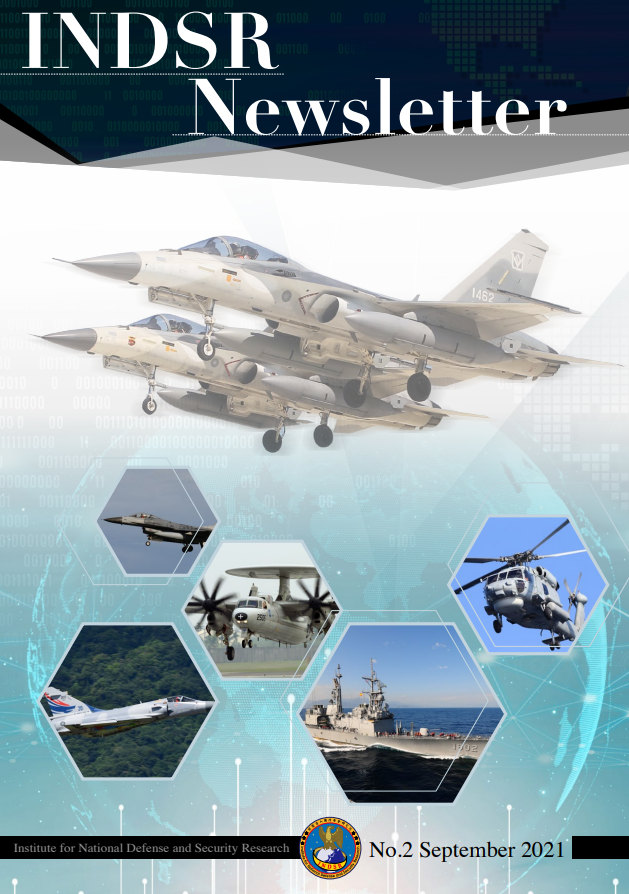Recent Development of Japan’s Security Relations with Southeast Asia
2021.10.12
Views
166
PDF link:
1. News Highlights
This year, Japan, which touts the “Free and Open Indo-Pacific” policy, has interacted frequently with Southeast Asian countries on regional security issues. For instance, Japan’s Defense Minister Nobuo Kishi initiated conversations with defense ministers of those countries and explored possibilities of defense equipment transfer (i.e., arms exports). The conversations involved Nobuo Kishi and the defense ministers (or deputy ministers) of Indonesia (March 29), Malaysia (April 15), Brunei (May 20), Thailand (May 25), the Philippines (June 2), Vietnam (June 3), Laos (June 23) and Cambodia (June 25). Nobuo Kishi also participated in the expanded ASEAN Defense Ministers’ Meeting (ADMM-Plus).[1]
In terms of military exercises, the Japan Air Self-Defense Force and the Philippine Air Force conducted their first joint exercise in the Philippines on July 5.[2] Regarding equipment transfer, it has been rumored this year that Japan is planning to export radar or naval ships to the Philippines, Malaysia, and Indonesia.
2. Security Implications
2-1. Japan helps “Maritime Southeast Asia” to counter China
Japan has always regarded Southeast Asia as its “lifeline,” and is very concerned about China’s inclination to engage in low-intensity conflicts with neighboring countries to enforce its control over the South China Sea. The implementation of China’s Coast Guard Law in February 2021 has deepened the worries of Japan’s Suga administration. That is also the reason why the Japanese government is still actively building security relations with Southeast Asian countries despite the rampant epidemic.
As observed from the conversations between Nobuo Kishi and the defense ministers of Southeast Asian countries, Kishi kept reiterating that the countries in this region should “respect international laws and regulations such as United Nations Convention on the Law of the Sea and “act against any attempt to change the status quo by force”. To countries having disputes with China over sovereignty in the South China Sea, such as Vietnam, the Philippines, Malaysia, Brunei and Thailand, Kishi additionally stressed his worries on China’s implementation of its Coast Guard Law.
Japan’s concern about China’s expansion in the South China Sea also reinforces its motivation to transfer weapons and military equipment to countries in the region. According to Japanese media, Japan is scheduled to sell frigates to Indonesia through a joint production project.[3] Following the sale of anti-aircraft radars to the Philippines in August 2020, Japan will also participate in a similar radar procurement tender of Malaysia soon.[4]
Today, the disputes over sovereignty or maritime rights with China concern those countries regarded being “Maritime Southeast Asia” such as the Philippines, Malaysia, Indonesia and Brunei, or countries facing the disputed sea (Vietnam, for instance). Although recently there have been fewer incidents of China seizing islands and reefs, there still are reports about “gray-zone conflicts” between China and regional countries, and the memory of a Chinese maritime police ship ramming and sinking a Vietnamese fishing boat in April 2020 is still fresh.[5] In this situation, Japan’s transfer of defense equipment to such countries should enhance their ability and confidence to respond to China’s intrusions. Even though the previous Japan-Philippines joint exercise was aiming at disaster relief training, the airdrop of supplies and other exercises are still tactically meaningful.
2-2. Japan extends defense influence on “Mainland Southeast Asia”
In addition to the conversations with defense ministers of the “Maritime Southeast Asian” countries, Japan also held dialogues with Laos and Cambodia, which have been considered to have close relations with China and are geographically part of “Mainland Southeast Asia”, on non-military issues such as infrastructure development support, disaster relief and epidemic prevention exchanges. The conversations also involved criticisms toward China (but not explicitly named) by stressing the compliance with international laws and Japan’s opposition to changing the status quo by force.
As Japan promotes the “Free and Open Indo-Pacific” vision, Laos and Cambodia have been considered since day one. Laos is China’s land neighbor, and the two countries, considered relatively pro-China in the region, are also included in China’s “Belt and Road” Initiative. Because of their relationship with China, the two countries may have concerns about China’s feelings when they interact with Japan, which is probably why Kishi did not mention China’s Coast Guard Law during his meetings with Laotian and Cambodian defense ministers. Due to the pro-China nature of the two countries, Japan’s interaction with them in the security field may be perceived by Beijing as an attempt to “invade” China’s turf.
3. Trend Forecast
3-1. Japan will further increase efforts on security relationship with Southeast Asian countries
As COVID-19 continues to spread, China’s “vaccine diplomacy” in Southeast Asia has somehow eased the tensions over the South China Sea sovereignty dispute. However, China has still made a habit of resorting to intimidation against the neighboring countries concerned. In March 2021, for example, the Philippine government alleged that more than 200 Chinese fishing boats, suspected of carrying maritime militia, invaded its territorial waters or exclusive economic zone.[6] On May 31, 2021, as many as 16 Chinese military transport planes (including IL-76 and Y-20 strategic transporters) invaded Malaysia’s flight information region, forcing the Malaysian air force to scramble to respond.[7]
Due to the impact of COVID-19, countries such as the Philippines, Malaysia, Indonesia and Thailand have curbed their defense spending.[8] As an extraterritorial power, Japan’s willingness to pay more attention to the security of Southeast Asia and even to check against China in the area is certainly welcomed. Under the consideration of their respective national interests, Japan is expected to continue the defense exchanges with Southeast Asian countries.
3-2. Laos and Cambodia will become major targets of Japan’s Southeast Asian policy
The strategic relationship between Laos and Cambodia and Beijing has always been close; and the introduction of Belt and Road-related construction projects has led the debt to China to a new height for the two countries and exposed them even more to Chinese influence.
Japan has initiated the “New Tokyo Strategy 2015” and the “Free and Open Indo-Pacific” vision, and spares no effort in supporting Laos and Cambodia’s infrastructure development in the Mekong River basin. Now the Japanese Defense Ministry is stepping up dialogue with the two countries in the security field with Laos and Cambodia not rejecting Japan’s talk of China, showing that Japan’s influence on the two countries is emerging.
It’s speculated that this may be due to the “demonstration effect” on Laos and Cambodia from Japan’s assistance to Vietnam in many areas. If this is true, Japan may further promote security cooperation with Vietnam, Laos and Cambodia in the future to dilute China’s long-standing influence over the two countries, and Beijing will get more wary and responsive to this possible development. The competition between Japan and China on Southeast Asia security issues and the possible interaction between the two powers in the East China Sea and South China Sea will be worthy of further observation and analysis.
PDF link: newsletter9_2.pdf
[1] “About Minister of Defense Kishi’s Attendance at the 8th Expanded ASEAN Defense Ministers' Meeting (Summary),” Ministry of Defense, Japan, June 16, 2021. https://www.mod.go.jp/j/approach/exchange/dialogue/j-asean/admm/08/admmplus_8.html
[2] “Japan’s Air Self-Defense Force held joint exercises with the Philippines near the capital for the first time," Jiji Press, July 5, 2021. https://www.jiji.com/jc/article?k=2021070500675&g=int
[3] 〈“Joint production of naval vessels with Indonesia using JMSDF ships as prototype to strengthen regional security cooperation”, SankeiBiz, May 14, 2021. https://www.sankeibiz.jp/macro/news/210514/mca2105140605003-n1.htm.
[4] “[Exclusive] The government to export air defense radar to Malaysia, participating in bidding from next month”, Sankei News, June 19, 2021. https://www.sankei.com/article/20210619-2K2ZJ72KANOJHADMVVBU6E7ITE/.
[5] “China on collision course! Chinese ships hit Taiwanese and Japanese ones and sank Vietnamese fishing boat on Thursday,” The Liberty Times, April 4, 2020. https://news.ltn.com.tw/news/world/breakingnews/3122781;Khanh Vu, “Vietnam protests Beijing's sinking of South China Sea boat,” Reuters, April 4, 2020, https://reurl.cc/2rq2vr.
[6] “South China Sea dispute: Philippines claims more than 200 Chinese ‘fishing boats’ invaded its waters”, BBC, March 22, 2021. https://www.bbc.com/zhongwen/trad/world-56480429
[7] “Malaysia claims 16 Chinese military aircraft intruded its airspace, Chinese ambassador summoned to explain”, Central News Agency, June 2, 2021. https://www.cna.com.tw/news/firstnews/202106020006.aspx.
[8] "Section 7: Southeast Asia, Part I: The Security Measures Surrounding Japan” of 2021 Defense White Paper, p. 99, Japan Ministry of Defense. https://www.mod.go.jp/j/publication/wp/wp2021/pdf/R03010207.pdf. “Southeast Asia’s Defense Spending Slashed due to Covid-19, Causing Defense Gap Against China,” The Nihon Keizai Shimbun, June 19, 2020, https://www.nikkei.com/article/DGXMZO60556930Z10C20A6FF8000/


